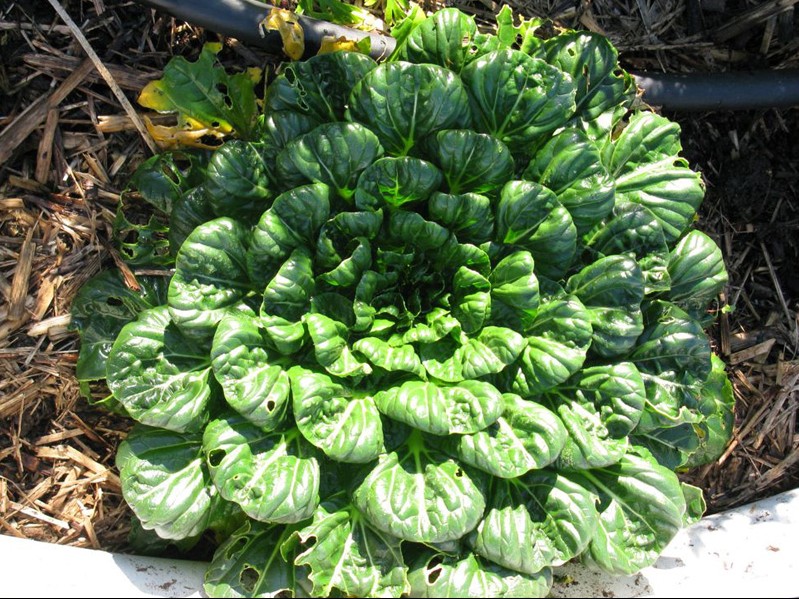Botanical name:
Brassica rapa, one of several Chinensis cultivars of this species
Description:
Bok choi is one of the Asian greens, a type of Chinese cabbage. This quick growing cabbage doesn’t build a firm head but a flattish rosette of dark green leaves, 5 cm high and about 20 cm in diameter. The leaves are the vegetable and are about 6 cm long. Bok choi is high in vitamin A and vitamin C. If bok choi goes to flower it shows the typical cross-shaped flower of the cabbage family with four petals.
How to grow:
Sow directly 3 mm deep in well drained and lightly fertilised soil where it’s supposed to grow. Sow in spots 20 cm apart. Put in 3 seeds per spot, 2 cm apart. Firm down and keep moist. Choose a sunny warm place. Plants appear within 6 to 10 days. Thin the plants to 2 and finally one plant per spot, 20 cm apart and mulch between the plants. Plants need to be watered consistently.
Harvest in 6 to 8 weeks.
Growing in the neighbourhood:
Likes to grow with lettuce, kale, endive, tatsoi, mizuna.
Pests and other problems and how we deal with them:
Caterpillars of butterflies, especially the white cabbage butterfly are pests on bok choi. We keep them out by netting the bed with a 5-10 mm net as long as the plants are small. A bit of leaf loss on mature plants is tolerable, if caterpillars take away too much leaf material we spray the plants with a bacterial solution that controls them.
All members of the cabbage family can be affected by a single-celled organism deforming the roots and making it hard for the plants to take up water. The problem is called club root and requires serious soil treatment. We try to avoid this by strictly rotating crops.
Season:
Spring to Autumn
Seed-saving:
Bok choi cross pollinates with other plants of the cabbage family. In order to collect useful seeds the mother-plant would need to be kept isolated.
How to harvest and use:
Pick single outer leaves or harvest whole plant. The leaves are kept to be eaten, the roots at the bottom are taken to the compost.
Bok choi leaves a great addition to salads. They can be used in stir fries. They are also great quickly blanched, served with a sauce or added to soups. They work well with garlic, ginger, mushrooms, soy sauce, tofu, pork, white fish, chicken.
